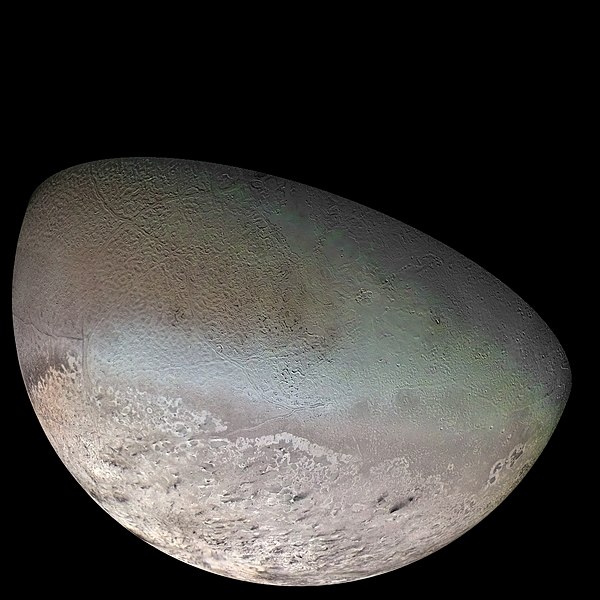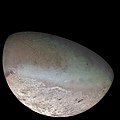Податотека:Triton moon mosaic Voyager 2 (large).jpg

Големина на овој преглед: 600 × 600 пиксели. Други разделности: 240 × 240 пиксели | 480 × 480 пиксели | 768 × 768 пиксели | 1.024 × 1.024 пиксели | 2.048 × 2.048 пиксели | 4.700 × 4.700 пиксели.
Изворна податотека (4.700 × 4.700 пиксели, големина: 12,11 МБ, MIME-тип: image/jpeg)
Историја на податотеката
Стиснете на датум/време за да ја видите податотеката како изгледала тогаш.
| Датум/време | Минијатура | Димензии | Корисник | Коментар | |
|---|---|---|---|---|---|
| тековна | 21:40, 10 октомври 2011 |  | 4.700 × 4.700 (12,11 МБ) | Jbarta | Minimally compressed JPG from TIFF original at NASA. This image has already been colored by NASA. I think we have no business trying to "fix" the coloring. The only alteration made from the NASA original is to enlarge the canvas to enclose the complete sp |
| 23:00, 1 јануари 2010 |  | 4.600 × 4.600 (2,81 МБ) | Supportstorm | Image Adjustments: Auto levels on contrast and color | |
| 23:59, 18 февруари 2008 |  | 4.600 × 4.600 (1,71 МБ) | Kaldari | same image, better dimensions | |
| 06:59, 8 април 2005 |  | 4.500 × 3.500 (1,96 МБ) | Bricktop | same image, higher resolution | |
| 19:13, 3 април 2005 |  | 1.024 × 796 (150 КБ) | Smartech~commonswiki | A color mosaic of Triton, Neptune's moon (large). Taken by Voyager 2 in 1989. Color was synthesized by combining high-resolution images taken through orange, violet, and ultraviolet filters; these images were displayed as red, green, and blue images and |
Употреба на податотеката
Податотекава се користи во следниве 8 страници:
Глобална употреба на податотеката
Оваа податотека ја користат и следниве викија:
- Употреба на af.wikipedia.org
- Употреба на an.wikipedia.org
- Употреба на ar.wikipedia.org
- Употреба на ary.wikipedia.org
- Употреба на arz.wikipedia.org
- Употреба на ast.wikipedia.org
- Употреба на azb.wikipedia.org
- Употреба на az.wikipedia.org
- Употреба на ba.wikipedia.org
- Употреба на be-tarask.wikipedia.org
- Употреба на be.wikipedia.org
- Употреба на bg.wikipedia.org
- Употреба на bn.wikipedia.org
- Употреба на bn.wikibooks.org
- Употреба на bs.wikipedia.org
- Употреба на ca.wikipedia.org
Погледајте ја останатата глобална употреба на податотекава.

